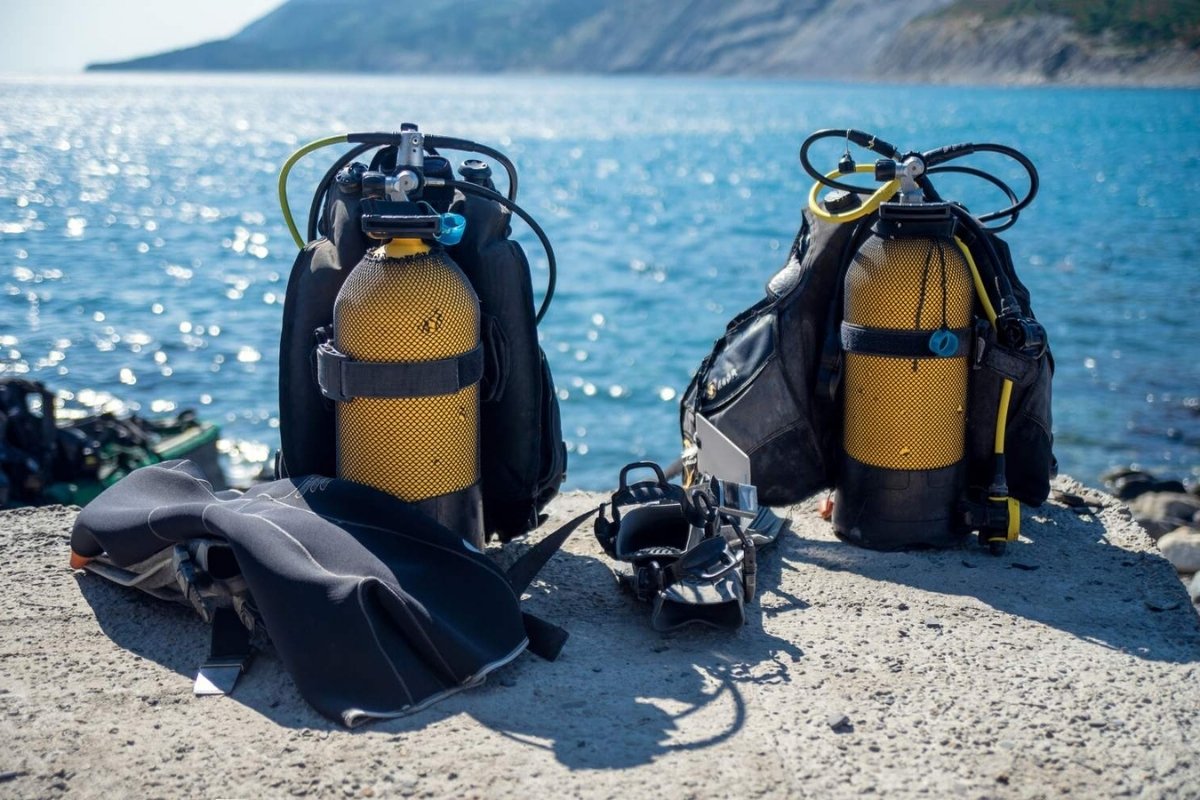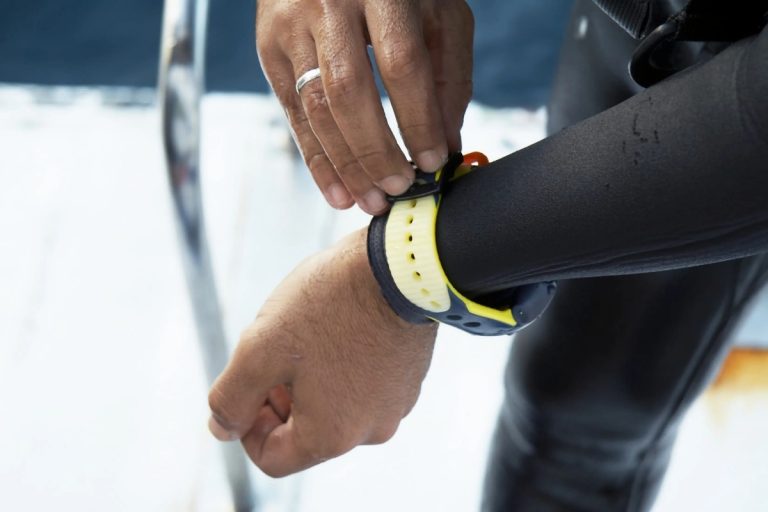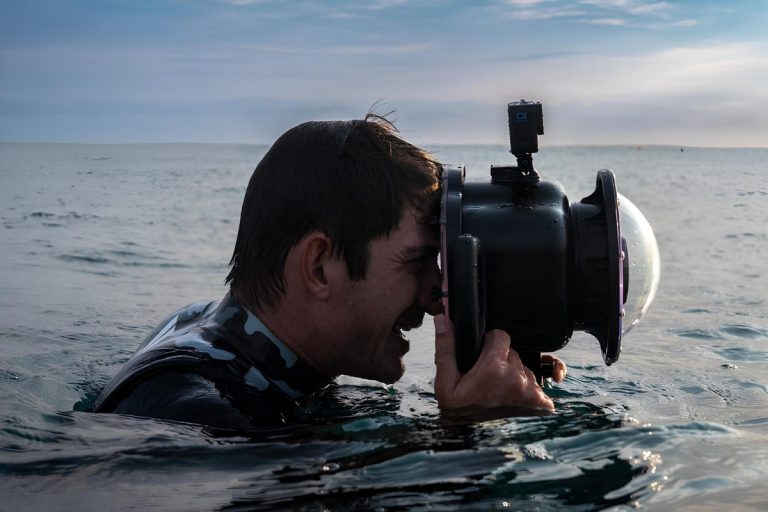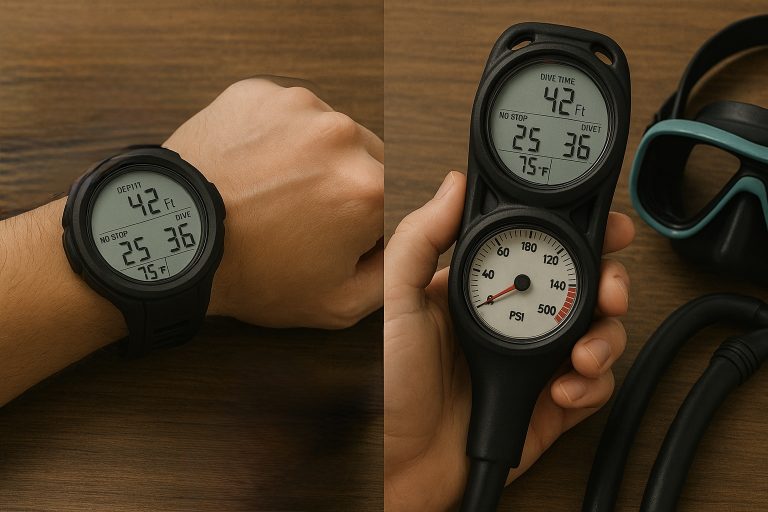Introduction to Scuba Diving Gear
Understanding your scuba equipment isn’t just about knowing what each piece does—it’s about building confidence underwater and ensuring every dive is both safe and enjoyable. Whether you’re planning your first open water adventure or looking to upgrade your current setup, having the right knowledge about diving gear makes all the difference.
Quality equipment serves as your lifeline beneath the surface, allowing you to breathe, move, and navigate the underwater world with ease. Each component works together as part of an integrated system designed to keep you comfortable and secure throughout your dive.
Importance of Understanding Scuba Gear
Your diving equipment literally keeps you alive underwater, making it essential to understand how each piece functions and interacts with the others. When you know your gear inside and out, you can quickly identify potential issues before they become serious problems, respond appropriately to equipment malfunctions, and make informed decisions about what to buy or rent.
Proper gear knowledge also enhances your diving experience by helping you choose equipment that matches your diving style, comfort preferences, and the specific conditions you’ll encounter. This understanding translates directly into more relaxed, confident diving.
Overview of Essential Equipment
The core components of scuba diving gear include your mask and snorkel for vision and surface breathing, fins for propulsion, a BCD for buoyancy control, regulators for breathing underwater, and thermal protection through wetsuits or dry suits. Additional essential items include dive computers for monitoring depth and time, weights for achieving neutral buoyancy, and various safety accessories.
Each piece serves a specific purpose, but they all work together to create a complete diving system. Understanding this interconnected nature helps you make better choices when selecting, using, and maintaining your equipment.
Choosing the Right Gear for Diving Conditions
Different diving environments demand different equipment considerations. Warm tropical waters require lighter thermal protection and may allow for more streamlined gear choices, while cold water diving demands thicker wetsuits or dry suits and potentially more robust equipment designed to handle challenging conditions.
Factors like water temperature, visibility, current strength, and dive depth all influence your gear selection. Planning ahead and matching your equipment to expected conditions ensures comfort and safety throughout your underwater adventures.
Masks and Snorkels
Your mask creates the air space necessary for clear vision underwater, while your snorkel allows surface breathing without lifting your head. These fundamental pieces of equipment require proper fit and regular maintenance to function effectively throughout your diving adventures.
A well-fitting mask should create a comfortable seal around your face without excessive pressure, while a quality snorkel should feel natural in your mouth and allow easy breathing at the surface. Both pieces require attention to detail when selecting and maintaining them for optimal performance.
Types of Masks
Single-lens masks offer the widest field of vision and are popular among photographers and videographers who need maximum visual coverage. Two-lens masks provide a more traditional fit and often accommodate prescription lenses more easily, making them ideal for divers who need vision correction underwater.
Low-volume masks sit closer to your face and require less air to clear when water enters, making them efficient for frequent mask clearing. High-volume masks offer more comfort for some face shapes but require more effort to clear and equalize during descent.
Snorkel Features and Functions
Modern snorkels include various features designed to improve comfort and functionality. Dry-top snorkels prevent water entry when submerged, while purge valves at the bottom allow easy clearing of any water that does enter the tube.
Flexible tubes provide better positioning and comfort, especially when the snorkel isn’t in use during the dive. Some snorkels feature splash guards to minimize water entry in choppy surface conditions, though these aren’t necessary for all diving situations.
Common Issues and Fixes
Mask leaks typically result from improper fit, hair caught in the seal, or a damaged skirt. When dealing with mask and snorkel fitting issues, check that the mask sits properly on your face without gaps, and ensure no hair interferes with the seal around the edges.
Snorkel problems often involve water entry or difficulty breathing. Regular inspection of purge valves and mouthpiece condition helps prevent these issues. Proper care and storage protect both pieces from damage and extend their useful life significantly.
Fins
Fins transform your leg movements into efficient underwater propulsion, allowing you to glide through the water with minimal effort while conserving energy for longer dives. The right fins match your leg strength, diving style, and the specific conditions you’ll encounter underwater.
Different fin designs serve various purposes, from powerful propulsion for strong currents to precise maneuvering for photography work. Understanding these differences helps you select fins that enhance rather than hinder your diving experience.
Choosing the Right Fins
Blade length and stiffness directly affect propulsion efficiency and leg fatigue. Longer, stiffer blades generate more power but require stronger leg muscles and proper technique to use effectively. Shorter, more flexible blades offer easier use and less fatigue but may provide less propulsion in challenging conditions.
Foot pocket design determines comfort and energy transfer from your legs to the fin blade. A properly fitting foot pocket feels snug without pinching, allows good circulation, and transfers your leg power efficiently to move you through the water.
Fins for Different Diving Styles
Technical divers and those exploring wrecks often prefer fins designed for precise maneuvering and powerful propulsion in tight spaces. Travel divers prioritize compact, lightweight options that pack easily while still providing adequate performance for recreational diving.
Photography and videography work benefits from fins that allow subtle positioning adjustments without stirring up sediment. When selecting the best fins for travel, photography, or technical diving, consider how each design feature supports your specific underwater activities and travel requirements.
Maintenance Tips for Fins
Regular rinsing with fresh water removes salt, sand, and other debris that can damage fin materials over time. Pay special attention to the foot pocket area and any adjustment mechanisms, as these areas collect debris and experience the most wear during use.
Proper storage prevents warping and cracking, especially in rubber and silicone fins. Avoid leaving fins in direct sunlight or extreme temperatures, and store them flat or hanging to maintain their shape and flexibility for years of reliable service.
BCD (Buoyancy Control Device)
Your BCD serves as both a buoyancy control system and a platform for carrying essential equipment throughout your dive. This critical piece of gear allows you to achieve and maintain neutral buoyancy while providing attachment points for accessories and emergency equipment.
Modern BCDs come in various styles designed for different diving preferences and body types. Understanding these differences helps you choose a BCD that enhances your comfort and diving performance while providing reliable buoyancy control in all conditions.
Function and Importance of BCDs
Buoyancy control forms the foundation of good diving technique, allowing you to hover motionless in the water column, ascend and descend smoothly, and conserve energy throughout your dive. Your BCD makes these essential skills possible by providing precise control over your overall buoyancy.
Beyond buoyancy control, your BCD carries your tank securely and provides attachment points for essential accessories like regulators, gauges, and safety equipment. This integration makes your BCD the central hub of your diving equipment system.
Different Types of BCDs
Jacket-style BCDs wrap around your torso and provide buoyancy around your chest and back, offering stable surface flotation and easy inflation control. These designs work well for recreational diving and provide excellent surface support for relaxed floating between dives.
Back-plate and wing systems position buoyancy behind you, allowing better trim and streamlining for technical diving or underwater photography. These systems offer more customization options but require more experience to use effectively and may feel less stable at the surface.
How to Properly Use a BCD
Effective BCD use involves making small, gradual adjustments rather than large changes that can lead to rapid ascents or descents. Add air in small amounts during descent to maintain neutral buoyancy, and release air gradually during ascent to prevent uncontrolled upward movement.
Practice inflating and deflating your BCD in controlled conditions until these actions become automatic responses. Understanding how your BCD responds to depth changes and breathing patterns helps you maintain better buoyancy control throughout every dive.
Regulators
Your regulator system transforms high-pressure air from your tank into breathable air at ambient pressure, making it literally your lifeline underwater. This sophisticated system includes multiple components working together to deliver reliable breathing gas throughout your dive.
Understanding regulator function and maintenance helps you recognize potential problems early and ensures reliable performance when you need it most. Proper care and regular servicing keep your regulator functioning safely for years of diving adventures.
Understanding Regulator Components
The first stage attaches to your tank valve and reduces high-pressure air to an intermediate pressure, typically around 140 PSI above ambient pressure. This component contains the mechanisms that make initial pressure reduction possible and feeds air to all second-stage regulators and inflator hoses.
Second stages reduce intermediate pressure air to ambient pressure for comfortable breathing. Your primary second stage provides your main air supply, while your alternate air source (octopus) serves as backup for emergencies or buddy breathing situations.
Choosing the Right Regulator
Cold water diving requires regulators specifically designed to prevent freezing, typically featuring sealed first stages and special materials that resist ice formation. Warm water regulators can use simpler designs that prioritize weight savings and ease of maintenance over cold-water performance.
Breathing performance varies significantly between regulator models, with some providing effortless breathing at any depth while others require more effort, especially at greater depths. Testing different regulators helps you find one that matches your breathing patterns and comfort preferences.
Regular Maintenance and Troubleshooting
Annual servicing by qualified technicians keeps your regulator functioning safely and reliably. This service includes replacing worn seals, checking all pressure settings, and testing safety mechanisms to ensure proper operation under all conditions.
Between services, proper rinsing and storage prevent most regulator problems. When troubleshooting your regulator, common issues include hard breathing, free-flowing air, or unusual noises, all of which require professional attention to resolve safely and effectively.
Wetsuits and Dry Suits
Thermal protection keeps you comfortable and safe during extended underwater exposure, preventing hypothermia and allowing you to focus on enjoying your dive rather than fighting cold. The right thermal protection matches water temperature, dive duration, and your personal cold tolerance.
Both wetsuits and dry suits offer effective thermal protection, but they work in fundamentally different ways and suit different diving conditions and preferences. Understanding these differences helps you choose the most appropriate thermal protection for your diving activities.
When to Use a Wetsuit vs. Dry Suit
Wetsuits work by trapping a thin layer of water between the suit and your skin, which your body warms to provide insulation. This system works well in moderate temperatures but becomes less effective in very cold water or during long dives where heat loss becomes significant.
Dry suits keep you completely dry by sealing out water entirely, allowing you to wear insulating layers underneath for warmth. These suits excel in cold water conditions but require additional training and practice to use safely and effectively.
Insulation and Comfort
Wetsuit thickness directly affects warmth, with thicker suits providing more insulation but also more bulk and reduced flexibility. Common thicknesses range from 3mm for warm water to 7mm or more for cold conditions, with some suits featuring variable thickness for optimal warmth and flexibility.
Proper fit ensures maximum thermal efficiency by minimizing water circulation inside the suit. A well-fitting wetsuit feels snug without restricting breathing or movement, while gaps or loose areas allow cold water circulation that reduces insulation effectiveness.
Care and Maintenance
Thorough rinsing removes salt, chlorine, and other chemicals that can damage neoprene and other suit materials over time. Use cool, fresh water and mild soap designed for wetsuit care, avoiding harsh detergents that can break down materials or cause skin irritation.
Proper drying and storage prevent mold, mildew, and material degradation. Hang suits properly to maintain shape, avoid direct sunlight during drying, and store in cool, dry locations away from sharp objects that could cause tears or punctures.
Dive Computers
Modern dive computers revolutionize underwater safety by continuously monitoring depth, time, and decompression status throughout your dive. These sophisticated devices replace traditional depth gauges and dive tables while providing real-time information essential for safe diving practices.
Understanding how to use your dive computer effectively enhances both safety and enjoyment by providing accurate information about your dive profile and remaining bottom time. Proper use and maintenance ensure reliable operation when you need it most.
Purpose of Dive Computers
Dive computers calculate your nitrogen absorption and elimination in real-time, providing accurate decompression information based on your actual dive profile rather than pre-planned tables. This capability allows for longer bottom times and more flexible dive planning while maintaining safety margins.
Beyond decompression calculations, dive computers track important dive parameters like maximum depth, current depth, dive time, and surface intervals. Many models also include features like compass headings, temperature readings, and dive log storage for comprehensive dive monitoring.
Features to Look For
Display readability underwater determines how easily you can access critical information during your dive. Large, high-contrast displays with backlighting work best in various lighting conditions, from bright shallow water to dim deep environments.
Conservative decompression algorithms provide additional safety margins, especially important for repetitive diving or when diving in challenging conditions. Some computers allow algorithm adjustment to match your risk tolerance and diving experience level.
Using a Dive Computer Effectively
Pre-dive setup ensures your computer accurately reflects your diving conditions and personal preferences. Set appropriate conservatism levels, check battery status, and verify that altitude and gas mix settings match your planned dive conditions.
During the dive, regular computer monitoring helps you stay within safe limits and plan your ascent appropriately. Understanding alarm meanings and proper responses keeps you safe when your computer indicates potential problems or limit approaches.
Essential Accessories
Safety accessories provide backup systems and emergency tools that can prove critical in challenging situations underwater. While these items may seem secondary to major equipment pieces, they often make the difference between a minor inconvenience and a serious problem during your dive.
Choosing appropriate accessories depends on your diving environment, experience level, and the specific activities you plan underwater. Quality accessories provide reliable performance when you need them most, making them worthwhile investments in your diving safety and enjoyment.
Necessary Accessories for Safety
Cutting tools become essential when entanglement threatens your safety underwater. A sharp, easily accessible knife or shears allows you to free yourself from fishing line, kelp, or rope that could trap you during the dive.
Signaling devices help you communicate with your dive buddy, boat crew, or emergency responders when needed. Surface signaling mirrors, whistles, and inflatable signal tubes provide multiple options for attracting attention in various conditions and situations.
Choosing the Right Accessories
Weight considerations affect your overall buoyancy and trim underwater. Proper weight distribution helps you achieve neutral buoyancy and maintain good body position throughout the dive, while too much or too little weight creates control problems and safety concerns.
Attachment systems keep accessories secure and easily accessible without creating entanglement hazards. Retractable lanyards, clips, and D-rings provide secure mounting while allowing quick access when you need specific tools or equipment.
Storing and Maintaining Accessories
Organized storage prevents loss and damage while ensuring quick access to essential items when needed. Dedicated pockets, attachment points, and carrying systems keep accessories secure during transport and readily available during dives.
Regular inspection and maintenance keep accessories functioning properly when you need them most. Check cutting edges, battery levels, and mechanical functions regularly, replacing worn or damaged items before they fail during critical moments underwater.
Gear Care and Maintenance
Proper equipment care extends the life of your diving gear while ensuring reliable performance and safety underwater. Regular maintenance prevents small problems from becoming major equipment failures and helps you identify potential issues before they compromise your diving safety.
Developing good maintenance habits saves money over time by preventing premature equipment replacement and reduces the likelihood of equipment failures during dives. Consistent care routines become second nature and contribute significantly to diving safety and enjoyment.
Importance of Gear Maintenance
Salt water, sand, and other environmental factors constantly attack your diving equipment, causing corrosion, wear, and degradation that can lead to equipment failure. Regular maintenance removes these harmful substances and prevents long-term damage that compromises equipment reliability.
Well-maintained equipment performs better and lasts longer, providing better value for your investment while ensuring reliable operation when you need it most. Preventive maintenance costs far less than emergency repairs or equipment replacement due to neglect.
Proper Rinsing Techniques
Thorough rinsing with fresh water removes salt, sand, chlorine, and other harmful substances that can damage equipment over time. Pay special attention to moving parts, crevices, and areas where debris typically accumulates during diving activities.
Soaking equipment in fresh water helps dissolve stubborn salt deposits and ensures complete removal of harmful substances. Use lukewarm water and mild detergents when necessary, avoiding harsh chemicals that could damage seals, fabrics, or other sensitive materials.
Annual Servicing Recommendations
Professional servicing by qualified technicians ensures that critical life-support equipment functions properly and safely. Regulators, BCDs, and other pressurized equipment require annual inspection and service to maintain manufacturer warranties and ensure reliable operation.
Service schedules depend on usage frequency and environmental conditions, with heavy use or harsh conditions requiring more frequent professional attention. Keeping detailed service records helps track maintenance history and ensures timely servicing of all critical equipment components.
Frequently Asked Questions
What are the essential components of scuba diving gear?
The essential components include a mask, snorkel, fins, BCD, regulator, wetsuit or dry suit, dive computer, weights, and safety accessories.
How do I choose the right scuba gear for different diving conditions?
Consider factors like water temperature, visibility, current strength, and dive depth to select equipment that ensures comfort and safety.
Why is gear maintenance important for scuba divers?
Regular maintenance prevents equipment failure, extends gear life, and ensures reliable performance underwater.
What is the function of a BCD in scuba diving?
A BCD (Buoyancy Control Device) helps divers maintain neutral buoyancy and serves as a platform for carrying essential equipment.
How can I maintain my scuba diving gear?
Proper rinsing after dives, annual servicing, and careful storage are key to maintaining scuba gear.
Navigating the Underwater World with Confidence
Arming yourself with the right knowledge about scuba diving gear not only enhances your diving experience but also ensures your safety beneath the waves. By understanding how each piece of equipment functions and how to maintain it, you can dive with confidence, explore the depths, and enjoy every underwater adventure to the fullest.






